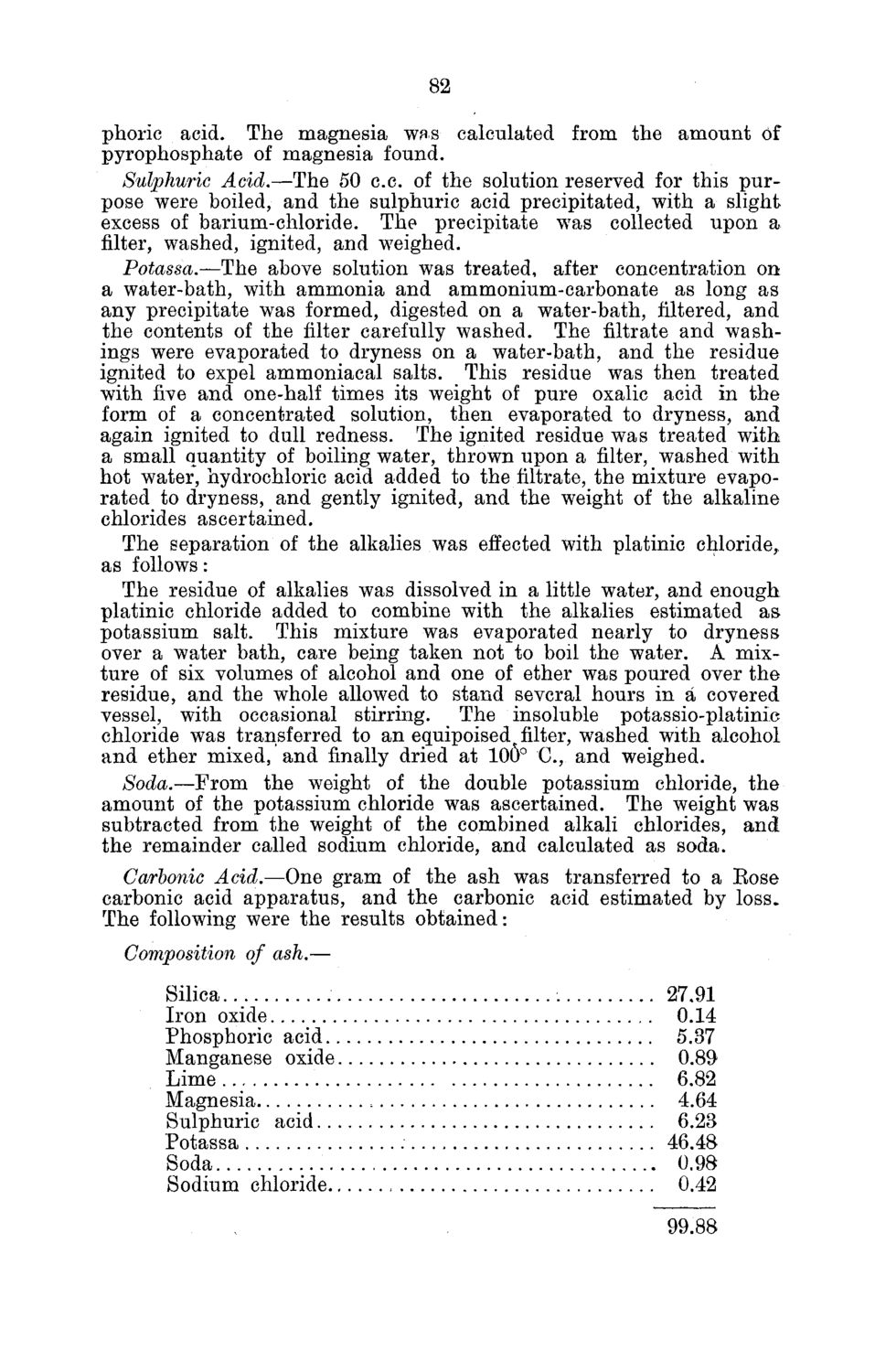| |
| |
Caption: Board of Trustees Minutes - 1882
This is a reduced-resolution page image for fast online browsing.

EXTRACTED TEXT FROM PAGE:
82 phoric acid. The magnesia was calculated from the amount of pyrophosphate of magnesia found. Sulphuric Acid.—The 50 c.c. of the solution reserved for this purpose were boiled, and the sulphuric acid precipitated, with a slight excess of barium-chloride. The precipitate was collected upon a filter, washed, ignited, and weighed. Potassa.—The above solution was treated, after concentration on a water-bath, with ammonia and ammonium-carbonate as long as any precipitate was formed, digested on a water-bath, filtered, and the contents of the filter carefully washed. The filtrate and washings were evaporated to dryness on a water-bath, and the residue ignited to expel ammoniacal salts. This residue was then treated with five and one-half times its weight of pure oxalic acid in the form of a concentrated solution, then evaporated to dryness, and again ignited to dull redness. The ignited residue was treated with a small quantity of boiling water, thrown upon a filter, washed with hot water, hydrochloric acid added to the filtrate, the mixture evaporated to dryness, and gently ignited, and the weight of the alkaline chlorides ascertained. The separation of the alkalies was effected with platinic chloride, as follows: The residue of alkalies was dissolved in a little water, and enough platinic chloride added to combine with the alkalies estimated as potassium salt. This mixture was evaporated nearly to dryness over a water bath, care being taken not to boil the water. A mixture of six volumes of alcohol and one of ether was poured over the residue, and the whole allowed to stand several hours in a covered vessel, with occasional stirring. The insoluble potassio-platinic chloride was transferred to an equipoised filter, washed with alcohol and ether mixed, and finally dried at 106° C , and weighed. Soda.—From the weight of the double potassium chloride, the amount of the potassium chloride was ascertained. The weight was subtracted from the weight of the combined alkali chlorides, and the remainder called sodium chloride, and calculated as soda. Carbonic Acid.—One gram of the ash was transferred to a Eose carbonic acid apparatus, and the carbonic acid estimated by loss. The following were the results obtained: Composition of ash.— Silica Iron oxide Phosphoric acid Manganese oxide Lime Magnesia Sulphuric acid Potassa Soda Sodium chloride. 27,91 0.14 5.37 0.89 6.82 4.64 6.2B 46.48 0.98 0.42 99.88 -. ,
| |